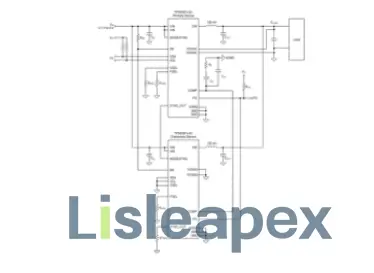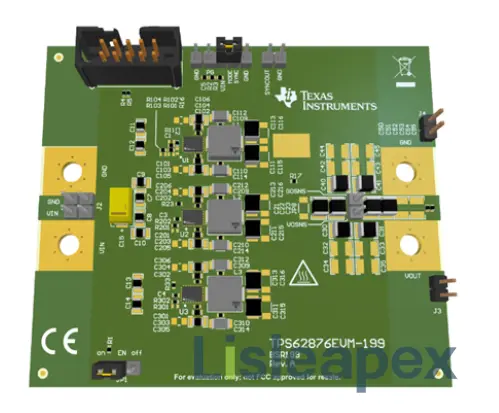Advanced Driver Assistance Systems (ADAS), including electrification of automotive systems for automatic driving vision analysis, parking assistance, and adaptive control functions, are becoming increasingly popular. Enhanced real-time computing capabilities are required for intelligent connectivity, safety-critical software applications, and neural network processing.
To meet these advanced requirements, a multi-core processor capable of supporting electronic control units (ECUs) with currents exceeding 100A, such as the TDA4VH-Q1, is needed. However, high power brings design challenges, including efficient implementation of higher current rails, controlling thermal performance and load transients under full load conditions, and meeting functional safety requirements.
Providing ADAS Processing Capability
The TPS62876-Q1 buck converter breaks through the current limitation of over 30A through its innovative stacking feature, which enables high current charging for on-chip systems (SoCs) like the TDA4VH-Q1. This series of devices, available in the same package, can provide currents ranging from 15A to 30A and, through stacking, support load currents greater than 100A.
Stacking these devices not only powers the next-generation ADAS SoC cores but also improves thermal performance and efficiency by reducing thermal restrictions.

The stacking feature operates normally using a daisy chain method. The main device controls a compensation network, a POWERGOOD pin, an ENABLE pin, and an I2C interface. To achieve optimal current sharing, all devices in the stack must be programmed to use the same current rating, switching frequency, and current level.
The main device in the stack can also set the output voltage and control voltage regulation. If a 47-kΩ resistor is placed between the SYNCOUT pin and ground, the device operates as a secondary device. If the SYNCOUT pin is in a high-impedance state, the device operates as the main device. Figure 2 shows the stacking configuration deployed on a printed circuit board.

Other performance features of this buck converter series include:
Voltage drop compensation, also known as load line regulation. By adjusting the nominal output voltage, better load transient tolerance can be provided based on the output current (15A to 30A), reducing output capacitance and achieving cost-optimized, high power density solutions. The REGISTER pin enables or disables voltage drop compensation, with the default state being disabled.
Remote sensing functionality supports various SoC processors with strict output voltage requirements, requiring more margin during load transients. The device's remote sensing lines are directly connected to the load point and support voltage setting with 8% accuracy.
The I2C interface monitors system performance and issues warnings when temperature and output current exceed specified limits. Additionally, dynamic voltage scaling can be used to adjust the output voltage between 4V and 1.675V. If I2C functionality is not required, the same device can still be used by grounding the SCL and SDA pins.
Functional Safety
Functional safety is crucial in ADAS, especially for autonomous driving. The TPS62876-Q1 buck converter provides multiple TI functional safety-level documents, including:
Functional safety time base failure rate estimation for semiconductor components based on industry reliability standards.
Component failure modes and their distribution based on the primary functions of the device.
Pin failure mode analysis.
Meeting automotive safety integrity level requirements by adding external monitors to the design.
Conclusion
To achieve higher levels of automated driving, such as Level 2 and beyond, automotive engineers require increased computing power to provide higher resolution and fast response times. Embedded features like artificial intelligence technology further drive the demand for higher power ADAS SoC processors. The stacking capability of the TPS62876-Q1 series helps achieve core power exceeding 100A, enabling higher levels of autonomous driving.
訂閱時事通訊,了解 亮辰科技 的最新動態


 恭喜您提交成功
恭喜您提交成功
 提交失敗
提交失敗